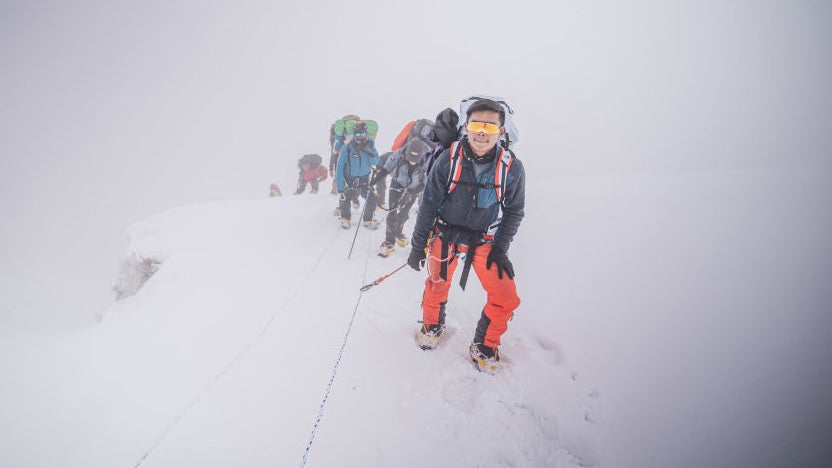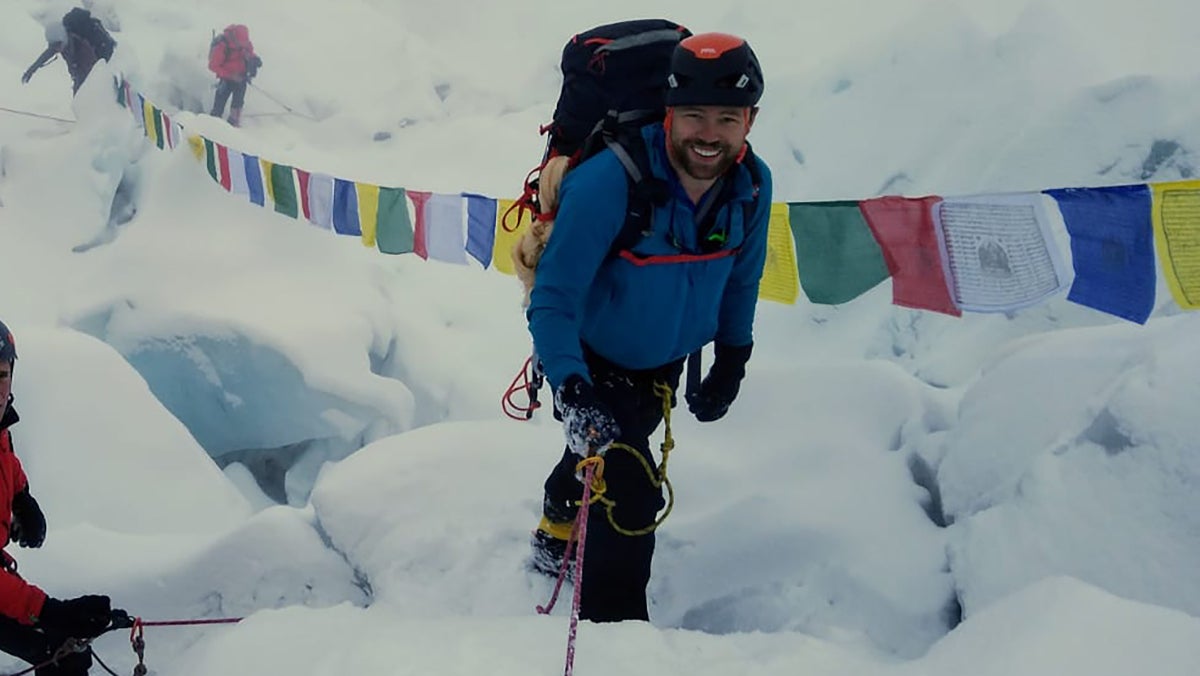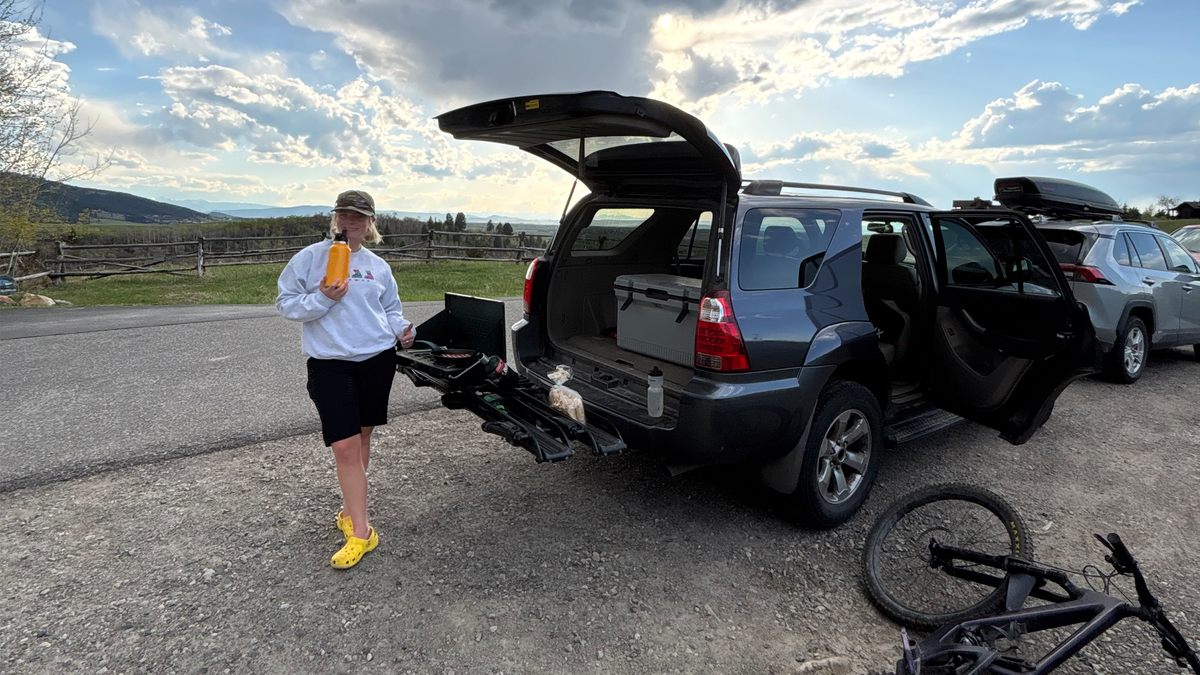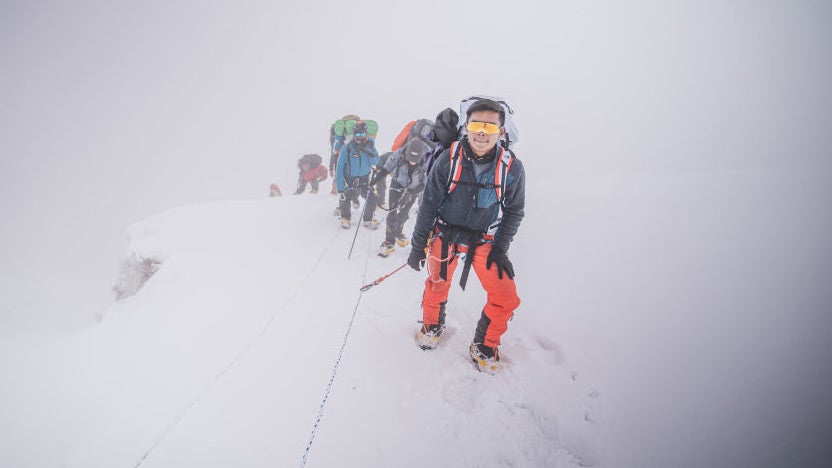
The climbing season on Mount Everest is about to get a much-needed shot of adrenaline.
On Friday, May 9, a rope-fixing team comprised of nine climbing sherpas from guiding company 8K Expeditions reached the summit, signaling the official start of summit bonanza on the world’s highest peak.
In 2024, the route was finalized on May 10. This year, the rope fixers were initially ahead of schedule, but they were then delayed by weather.
“There has been a lot of deep snow up high,” said Director of 8K Expeditions Lakpa Sherpa.
At Base Camp, 440 climbers, as well as their guides and sherpas, have been eagerly awaiting the news.
How Do Rope Fixers Build the Route to the Summit?
The route to Mount Everest’s summit from Nepal follows the same general pathway each year. From Base Camp, climbers ascend through the Khumbu Icefall, across the Western Cwm (pronounced “coom”), up the Lhotse Face, and past the South Col, Balcony, Hilary Step, and on to the official summit at 29,032 feet.
But it’s not exactly the same, as shifting snow drifts, collapsing ice, and other elements on the mountain constantly change. Before climbers can push for the summit, mountain workers must first build two crucial parts of the route. Specialists called the Icefall Doctors secure ropes and lay down ladder bridges through the labyrinthian Khumbu Icefall, a section of glacier is riddled by crevasses and sheer drop offs.
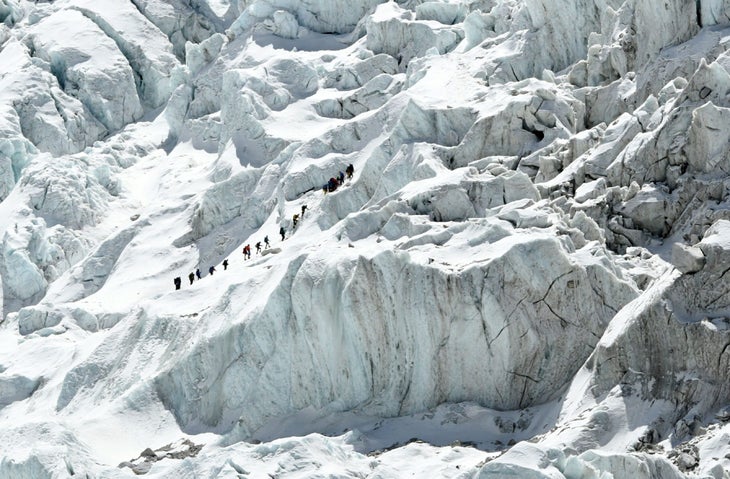
Then, rope fixers must affix the safety lines from Camp II at 21,000 feet all the way to the top. These lines are a crucial part of the route, and climbers and guides secure themselves to these fixed lines to prevent falls. Traditionally, when the rope fixers complete their job, hundreds of climbers venture onto the mountain.
I’ve spent the last few days in Base Camp, speaking with climbers and guides, and people have told me they are either bored or impatient to get onto the peak. Every day, dozens of helicopters have arrived in Base Camp to drop off climbers anticipating the route opening.
Many in Base Camp are also following the progress of the handful of climbers who are this year’s “early bird” group. They departed Base Camp on Wednesday, May 7, and are hoping to follow in the footsteps of the rope fixers. This strategy avoids the traffic jam, but it’s risky—high camps are not yet stocked with oxygen bottles, tents, or fuel.
“The rule is that clients are only allowed to summit a full day after the fixing is completed,” said Pasang Phurba Sherpa, the director of Seven Summit Treks. “We coordinate with the fixing teams to minimize crowding and ensure all the camps are ready, especially Camp IV.”
Notable Climbers Ready for the Ascent
One climber joining the early ascent is British adventurer Mitch Hutchcraft, whose climb is the final leg of an ambitious global triathlon he’s calling 12,000 KM to Everest. Back in September, Hutchcraft swam across the English Channel. Then he got on a bicycle and rode 7,500 miles across 18 countries, from France to Nepal, where he began a 775-mile trek to Base Camp.
He is calling his adventure the “longest climb in Everest history.” He is ascending the peak with British-Nepali guiding company AGA Adventures.
I sat down with Hutchcraft in the coffee tent managed by Seven Summit Treks, and we explored his life story and expedition goals between coughing fits and whispered missives, as he struggled with laryngitis.
“I had always wanted to do Everest, but from zero feet, from sea level,” he said. “I’ve also always wanted to swim the channel, five times more people have climbed Everest than have swam the channel. One day I had a lightbulb moment, I’m like if I just l just lick the middle bit together, it becomes a triathlon.”
Hutchcraft told me that he has yet to fully fund his expedition through sponsorship. When asked if maybe he’d want to hang onto his beard, he revealed that he couldn’t due to financial reasons. “One of my sponsors is a razor company,” he said. “So annoying. I think it’s in the contract that I have to cut it.”
I also recently visited Austrian guide Lukas Furtenbach, who is overseeing six separate expeditions on Everest this year. We sat together at an empty camp table in the cavernous dining hall as a few of his guides talked quietly behind us.
The tent had the appointments and the icy luxury of a five-star hotel. He poured me an Americano and a glass of juice—both luxuries up here.
Furtenbach told me that the controversial xenon-gas fueled British team, which was hoping to summit Everest door-to-door from London in seven days, was on schedule. The team members had completed their xenon treatment in Germany and were waiting for his signal to arrive.
“They’ve completed their training and are waiting for the right weather window. I’m confident we’re going to get them to the summit this year.” Furtenbach told Outside
Furtenbach is overseeing another notable ascent: that of Ecuadorian ultrarunner Karl Egloff. Egloff is attempting to set the fastest known time for ascending Mount Everest without supplemental oxygen.
Just a few camps away, Nepali guiding company Asian Trekking is supporting Egloff’s rival for the FKT, American Tyler Andrews.
To prepare, Andrews has been running laps up nearby 21,250’ foot Mera peak. He’s also pedaling an exercise bike that was brought up by a helicopter. Both camps are quite tight-lipped about the record attempts and won’t disclose details on their strategies.
There are a number of other records happening on the mountain this year. American teenager Emma Schwerin, 17, is climbing with her father. Schwerin hopes to become the youngest woman to climb all seven summits and the youngest American woman to climb Everest. And “Mountain Queen” Lhakpa Sherpa, who was recently featured in a popular Netflix documentary, is back at Base Camp for her 11th summit, the most of any woman.
Kami Rita Sherpa, the climber with the most Everest ascents in history, is going for his 31st ascent, while also leading a team comprised of Indian Army soldiers.
Recent weather reports suggest stable conditions on the mountain around Wednesday, May 14. At the moment, that is when I expect the first wave of climbers to reach the top. With nearly 450 permits issued for Mount Everest this year—close to the record of 478 set in 2023—teams are anticipating conga lines and traffic jams on the peak’s route. As clients and team leaders scramble across the scree pathways of Base Camp, barking into walkie-talkies and vying for cappuccinos in the coffee tent, I’m just hoping to get some sleep.
My Health Luck on Mount Everest Runs Out
On Monday, May 5, my story How I Managed to Stay Healthy on My Trek to Mount Everest Base Camp published. Literally a few hours later, I began to feel a tickle in my throat. By the next morning, I was doubled over in my sleeping bag with a rib-splitting, uncontrollable hack.
In between coughing bouts, I could hear at least three other people in my camp experiencing the same thing. Despite my best efforts, I had come down with the legendary “Khumbu Cough”—a Mount Everest medical condition that afflicts many. The cold and dry air irritates your lungs, and after a few days you’re sick. People have been known to crack ribs or suffer even worse maladies from coughing so hard.
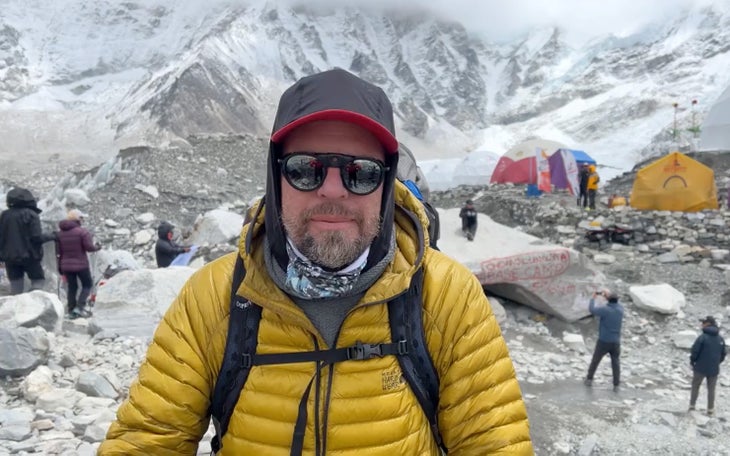
The sickness threw a wrench into my reporting at Base Camp, which has felt like a cross between a crowded climbing gym and a corporate conference. For the five days prior to getting sick, my days were packed with the basics: eating, going to the bathroom, sleeping, mixed with interviews with foreign climbers, expedition leaders, and others. In addition to writing for Outside, I am doing live daily updates on my Instagram feed, EverestLive.
Alas, after a day of coughing, I woke up on Wednesday, May 7, and realized my voice was gone. After a breakfast of sausage, eggs, potatoes, and toast at the Seven Summit Treks base, I decided to visit the expedition doctor in the medical tent.
The doctor, a short and wiry Iranian man in his 50s, stared into my throat with a flashlight and listened to my lungs. After the examination, he told me to pull down my pants.
“I could give you some anti-inflammatory pills,” he said. “But at this altitude, you need something stronger.” He pulled out a small vial of medicine, as well as a hypodermic needle, and plunged it into my glute.
Alas, the medication didn’t completely erase my symptoms. And thus, I’ve decided to board a helicopter for Lukla to recover at lower altitude for several days. It will be a short trip, and I am hoping to return early this coming week, just as the first wave of expeditions ventures onto Mount Everest.
Want to stay up on Outside’s 2025 Everest Season coverage? Sign up for our Outside: Dispatches from Everest newsletter.

Ben Ayers is a filmmaker, journalist, and adventurer who splits his time between Vermont and Nepal. In 2022 and 2024 he chronicled the Mount Everest climbing season for Outside.
The post Climbers Will Soon Push for the Summit on Mount Everest appeared first on Outside Online.











